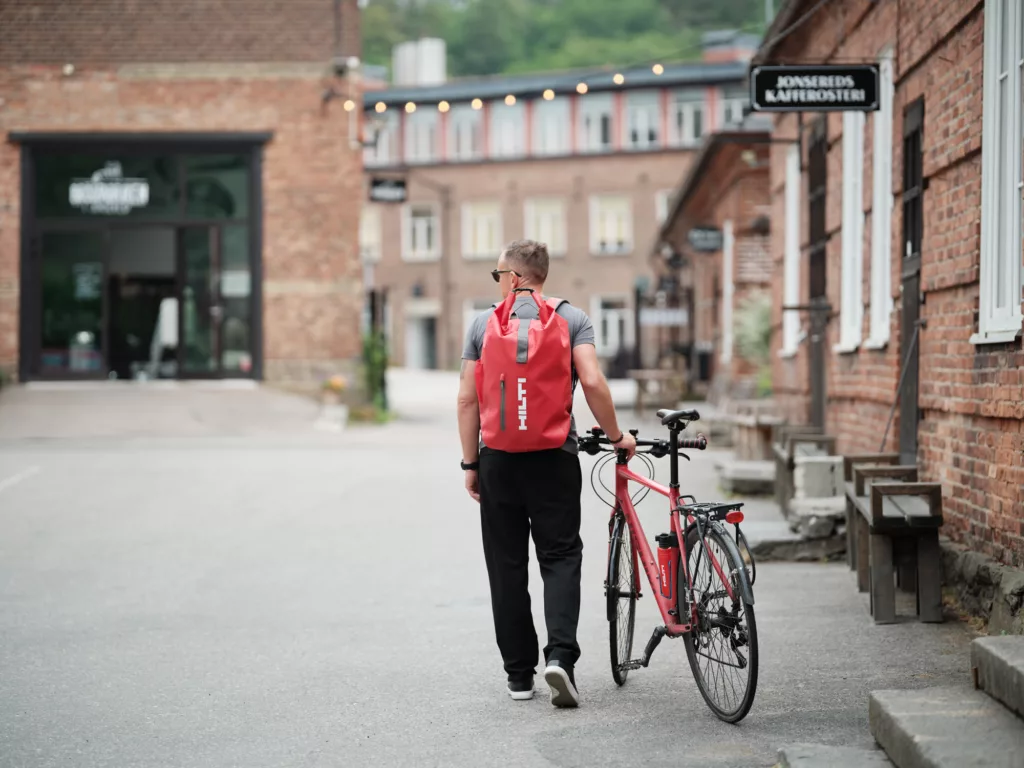This effort extends to the sustainability of their brand merchandise. Brandon provided strategic advice to Hilti, from product design and manufacturing, to packaging and delivery, which has led to various sustainable solutions being successfully implemented.

We needed to consider a holistic approach for improving a product’s sustainability, as well as ensure the products continued appeal to customers.
So, our strategy considered the following:
Since any single change might lead to benefits and disadvantages throughout the product’s lifecycle, it was critical that our analysis viewed the potential for reduced CO2 emissions and improved product sustainability from all angles: material, packaging, production, service life, and more. For example, producing a drink flask from wheatgrass might appear to be a green option at first glance. But what if it’s likely to break after a month of use? Would the 10-year life of a stainless-steel flask justify its less sustainable material? We dug deep into the details to verify which approach is best.
We analyzed and agreed upon the following points with Hilti to form an effective strategy for sustainable brand merchandise:

We made several immediate improvements to the sustainability profile of Hilti merchandise.
These included:
Manufacturing “closer to source” in Europe, significantly reduces the environmental impact of shipping merchandise. And, thanks to our extensive network of suppliers, we succeeded in manufacturing all Hilti’s promotional clothing in Europe, while maintaining an affordable retail price. On top of that, clothes are made with organic cotton or lyocell, an eco-friendly fiber which uses 20% less water than cotton production.
As well as improving the sustainability of merchandise, we introduced emissions-reducing modifications to the packaging and shipping of merchandise:
We created a “Better Choice” category for products in the Hilti webshop.
As well as a distinct, easy to find category, Better Choice products can also be identified by a label which is displayed on product images.
In the offline world, all Better Choice merchandise has labelling attached, visible to the customer, which says that it is recycled or organic and the percentage of the item that is recycled or recyclable.
We even communicated sustainability by writing a message on the product itself. For example, we included the word “recycled” on plastic pens and “I used to be a newspaper” on pencils. These types of products will naturally spread far and wide, and now, whoever picks up a Hilti pen or pencil, will know it’s been made using sustainable materials.
Despite the challenges presented by the Covid-19 pandemic, we have still succeeded in increasing the number of Better Choice items in the Hilti collection by 30%.
This has, in turn, increased the number of sustainable products sold to customers by 34%.
We are particularly proud of our work on Hilti’s clothing collection. In 2019, 0% of the clothing was sustainable. Within three years, we succeeded in making 100% of clothing a more sustainable Better Choice product.



